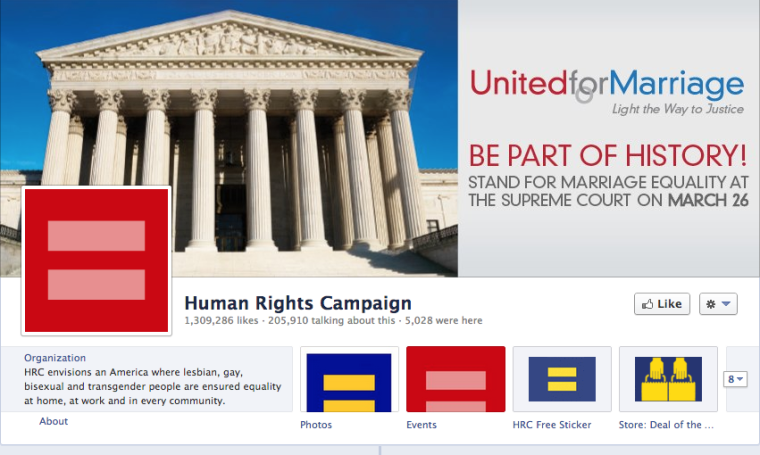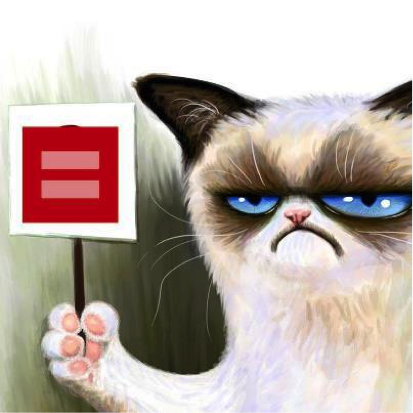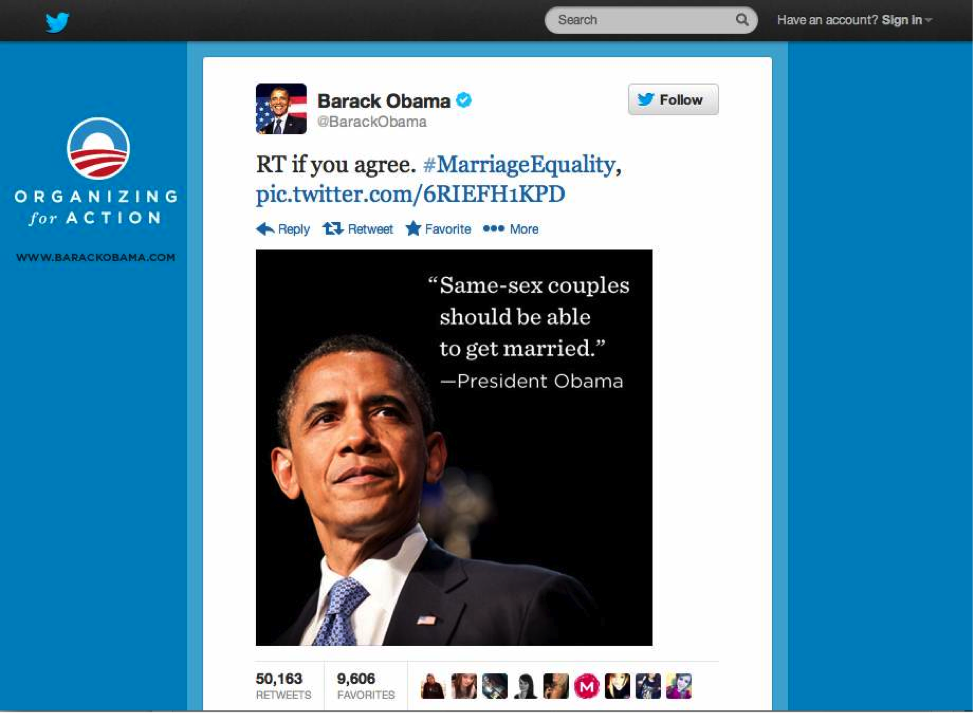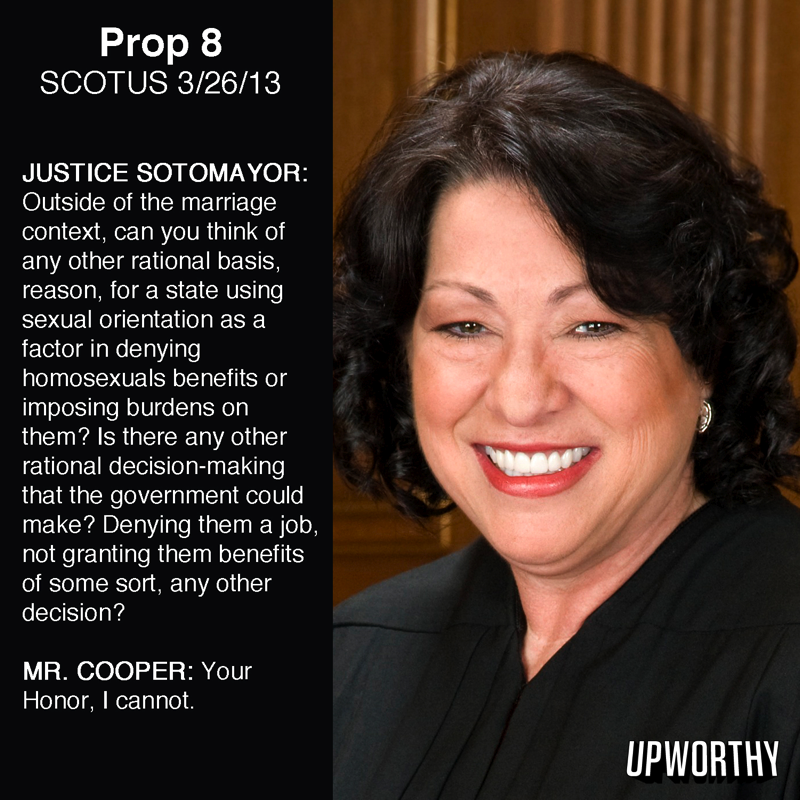Seeing Red: How and Why "Red Equals Equality" Spread
/This past week's debate in the Supreme Court over marriage equality inspired users of social networking sites to engage in a kind of symbolic politics -- swapping out their profile pictures for some variant on the theme, Red Equals Equality. Some of these could be as basic as turning their own pictures pink or using a red equals sign, but this "meme" became attached to a wide array of pop culture icons, such as Charlie Brown, Yoda, the Super Mario Brothers, the Bronies, George Takai, and of course, Burt and Ernie. In return, this phenomenon quickly developed a familiar backlash -- the dismissal that such activity can have any meaningful political effect at all.
Over at the blog for MIT's Center for Civic Media, this issue inspired a really provocative discussion between Molly Sauter, Matt Stempeck,and others, which took up some key concepts from Ethan Zuckerman's much acclaimed opening remarks at the MacArthur Foundation's Digital Media and Learning Conference:
Matt: Going pink may actually be tied to a theory of change, in that it changes norms and clearly establishes which side you are on in a cultural debate. Many of these oft-criticized ‘voice’ efforts are directed not at those with the power to change things directly, but at those who follow us on social networks and thereby know us. No one taking these actions is expecting a direct response from the Supreme Court.
Yet this action, taken by many, can matter. We know that support for gay marriage is linked with how likely it is we know someone who is openly gay. And we know that people care deeply about societal norms. Ever-increasing support for gay equality, generated at the interpersonal level, is only strengthened by a mass outpouring of support on social networks. People may be smarter than slackademic critiques allow.
Matt & Nathan: In the case of gay equality, the focus of change is also social itself. By going pink, people are standing up as allies and creating the perception of a safe space within their own friendship communities online-- spaces where gay people may face stigmas and bullying. That's another reason going pink may be meaningful: it was, for many people, a more difficult social decision than going green. Going green may have produced some indirect changes, in terms of raising awareness, or signaling a broader US audience for news from Iran than was previously assumed, or establishing affinity for the Iranian people at greater levels than we previously broadcast to our friends. But going pink was still, in many individuals' social networks, an act requiring some degree of bravery, because it's a more controversial topic, closer to home, and likely to alienate at least one social contact.
One of the more thoughtful responses I read to the Red Equals Equality campaign came from Elisabeth Shabi -- an undergraduate student at Georgia's Reinhardt College. Shabi is a student of my old friend, Pam Wilson, who has been teaching Spreadable Media: Creating Meaning and Value in a Networked Culture. Wilson shared the post via Facebook, appropriately enough, and I was impressed enough by what she had to say that I asked her if I could repost her comments here. At a time when more and more young people are getting their news, not from traditional journalism, but from items passed them by their friends on social media, this is a beautiful account of how "seeing red" might inspire young people to seek out additional information about issues. Thanks Pam and Elisabeth!
Spreadable Media...At It's Best
by Elisabeth Shabi, Reinhardt College
Fifty years ago, 20 years ago even, our grandparents and parents woke up and read the paper or turned on the television for a morning news show to get a glimpse on the current state of social affairs. Mygeneration wakes up and checks Facebook. And as social media and spreadable media would have it, Facebook has become a decent glimpse of the most updated happenings in the social/political sphere.
This morning as my newsfeed loaded, I began to see red. Profile pictures, cover photos, likes, links, posts, etc. all gone red for marriage equality. I never once turned on the news or read a paper, but I knew exactly why this day was so important by reading the dozens of posts on my newsfeed. Today, March 26, 2013, Proposition 8 went to the Supreme Court for debate.
As of about 10:30pm, 21 of the first 100 posts on my Facebook feed had to do with the marriage equality events of the day. I counted profile picture changes, likes, links and blatant status references to the marriage equality debate.
For statistics purposes, it should be noted:
- One post of the 21 was a joke post merely playing off the concept of the changed profile photos.
- One post of the 21 was irrelevant but showed a comment from another person (not my “friend”) that had changed his/her profile pictured to the red equal sign.
- If a person changed their profile picture and then later posted material irrelevant to the debate, this was not counted as part of my 21 posts.
- In addition to this support on my newsfeed, 10 out of my 262 friends had the red equal sign as their profile picture and 16 out of 50 posts on the instant newsfeed pertained to the marriage equality debate.
This article by The Shorthorn paper of University of Texas Arlington campus gives a summary on the technicalities of today’s debate and also discusses the social media campaign created to support marriage equality.
“Human Rights Campaign, a group that supports equality for gay, lesbian and transgender rights began a recent Facebook and Twitter campaign. The campaign’s page changed the colors of their traditional blue and yellow equal sign logo and began telling people to wear red to gain supporters online as the Supreme Court begins hearings for the next two days about gay marriage rights.”
An interesting side conversation of the above mentioned article brings up the topic of newsfeed content. One student interviewed for the article mentioned that he didn’t know what the red/pink equal sign being used for profile pictures meant until he researched it. I also saw a post appear on my personal newsfeed with a legitimate inquiry as to the meaning of the equal sign – and that was a 11 o’clock the night of the first day of debates.
This immediately made me think about how people personalize their Facebook newsfeed. I asked myself how I knew what the equal sign meant. My answer? The first post I read this morning – and one of the first I saw with the equal sign – was a news article posted by a friend discussing the Supreme Court’s upcoming challenge. Several posts later, a blog link appeared from my favorite magazine discussing a local author’s view on the topic. Granted several of the profile picture changes did not provide an explanation, but several others were accompanied by a supportive or explanatory status. These posts, coupled with several news articles, images, memes, and pages that were posted and shared just on my morning newsfeed gave me no doubt as to the day’s significance.
What does this mean for these people who had no idea of the campaign’s significance? Of the day’s historical events? Of course it could simply be that they are less frequent users of Facebook; however, I am more inclined to question the contents of their newsfeed. If one chooses not to be associated with people who are more inclined to share and post on these important social and political topics, or if you – for whatever reason – don’t tend to “like” the Facebook pages of agencies or news providers that will generally post or comment on these events, then your newsfeed may just contain friend-to-friend activity.
I hesitate to critique this “state of newsfeed” because after all the platform is social media and at its most basic Facebook is intended for “friend” and social interaction. For people such as myself however, since I am completely and disturbingly aware of my lack of daily news intake, I make it a point to diversify my Facebook newsfeed to the point where I can get at least a glimpse of important social and political events – especially when they are as popular as the marriage equality debate.
Returning to Henry Jenkins’s concept of Spreadable Media, it is worthy to note that we live in a culture where one of our main platforms of communication – the Internet – is a willing and receptive host for the spread of news and information. Social media, including Facebook, Twitter, etc. make it easy to share, link and connect content. Within 24 hours of a significant event, memes are created and news reports are published.
What effect does this spreadability have on campaigns, movements, and social change? For this current issue, it seems to have quite a weighty affect. The exposure alone is significant for the campaign and its supporters as relevant and influential content is reworked, manipulated, shared, linked and absorbed by social media audiences and co-creators. This goes beyond the platform of social media, in fact, as news sites and shows begin mentioning it simply for the wave created on the internet.
This MSNBC article as well as this article from the Wall Street Journal give details of the campaign’s effect on Twitter and Facebook. The WSJ article notes that “Two posts on the organization’s main Facebook page encouraging people to change their avatar were shared over 70,000 times.” Even President Obama tweeted his stance on marriage equality:
Another wonderful aspect of our spreadable media culture is the ease of access to direct information. The Human Rights Campaign blog provides an accessible link to the PDF transcript of the Court’s proceedings as well as a link for access to audio recordings. People have taken direct quotes from the Judges and created images, memes, etc. with the information. This article on Upworthy.com is a perfect example as it provides the following image as well as the actual audio clip of the exchange.
Not only is this content appealing to the eager eye and news absorber, but it provides truth and promotes an atmosphere of digital democracy. The internet is simply swarming with coverage. DigitalTrends.com calls the emergence of the symbolic red and pink equal sign the “Birth of the Marriage Equality Meme.” Articles such as this one from ThinkProgress.org show signs from the protestors and supports outside the Supreme Court.
The internet is alive with the exchange of news articles, photographs, blogs, images, etc. that hold opinions, commentary, facts, beliefs, updates, reports – everything you could ever desire. One thing is for sure: we have not seen the last of the now-famous, “viral,” and highly spreadable marriage equality meme.
Is this not spreadable media at its finest?







